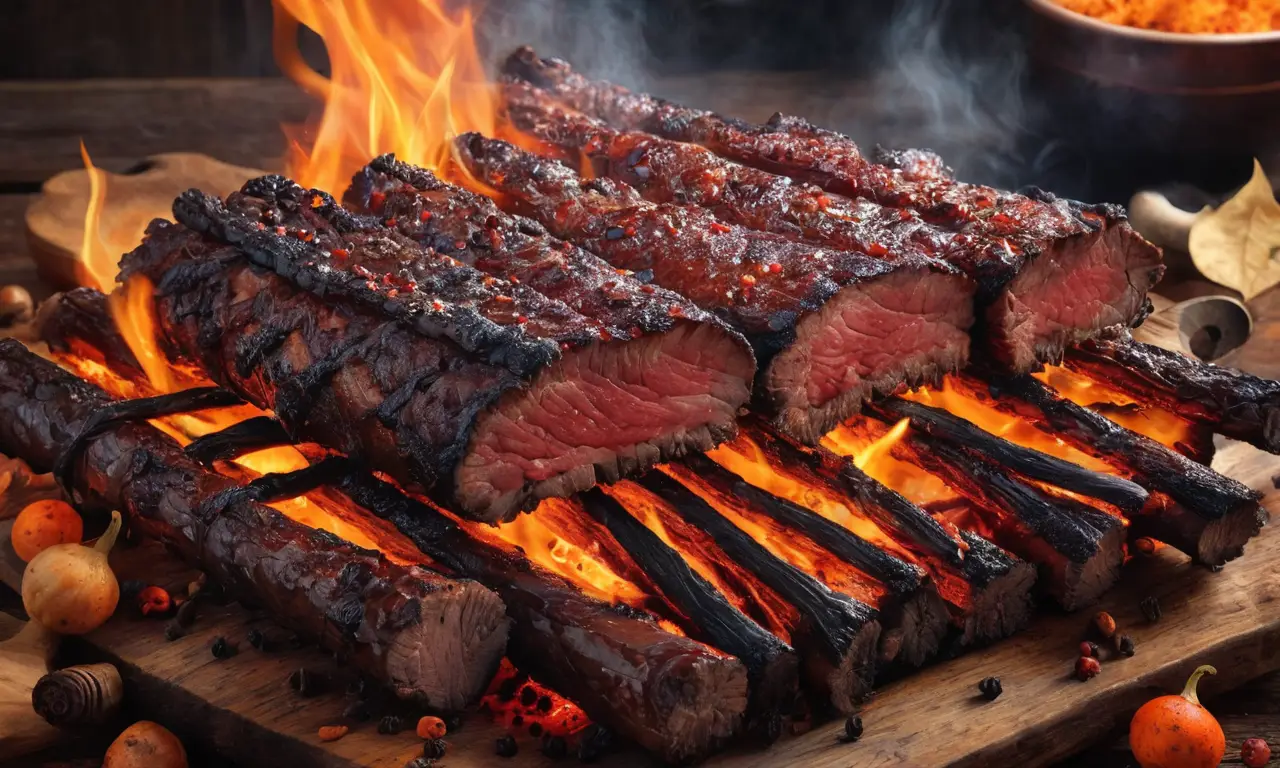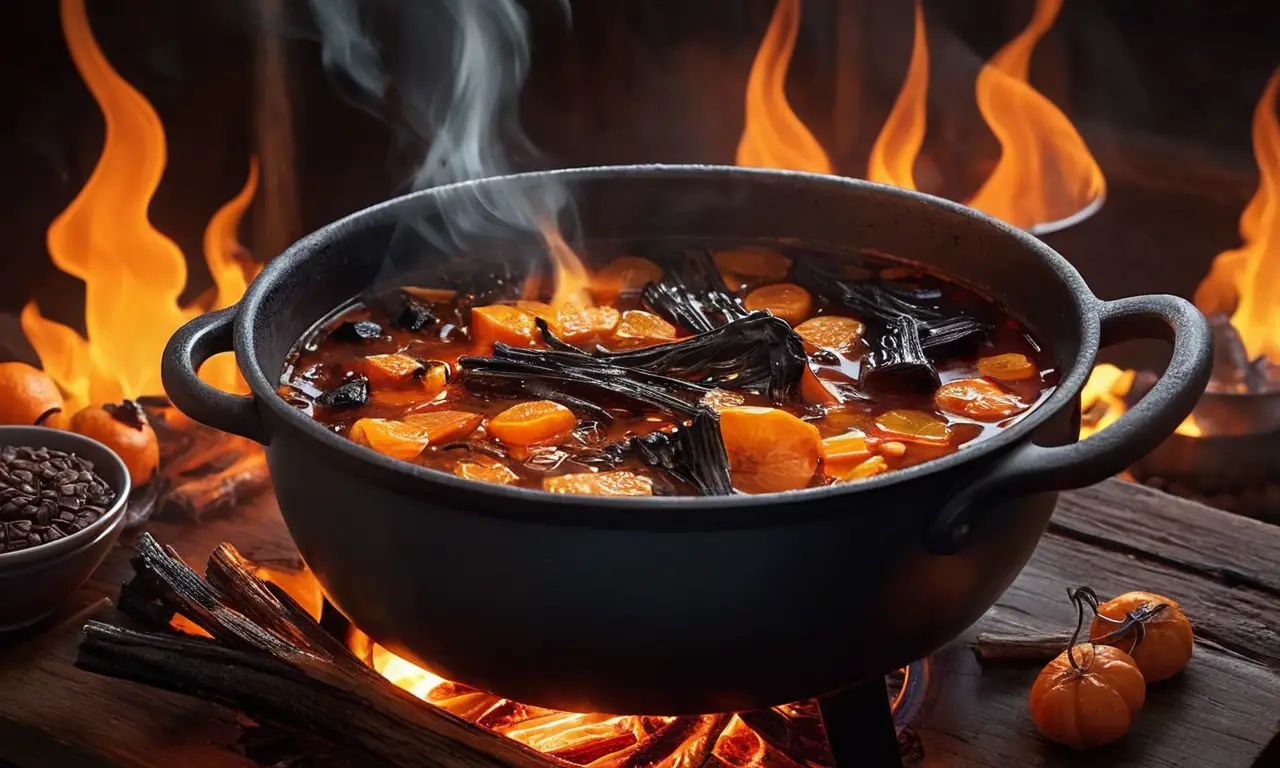
Have you ever wondered what does fire taste like? While fire itself doesn’t possess a flavor, the intense heat it generates and the smoke produced during combustion can significantly influence our perception of taste. This article delves into the fascinating interplay between fire, heat, smoke, and our sense of taste, exploring how these elements combine to create unique and often complex flavor profiles.
We’ll begin by examining how fire’s heat directly impacts our taste buds, followed by a detailed exploration of the diverse flavor profiles found in different types of smoke. We’ll then delve into the science behind burning materials and the specific compounds that contribute to the characteristic flavors of smoked foods. Finally, we’ll conclude with a summary of how fire’s influence on taste shapes our culinary experiences.
Fire and Taste Perception
Fire’s heat doesn’t directly impart a taste; instead, it alters our taste perception by affecting the way our taste buds function. When exposed to high temperatures, our taste receptors become less sensitive, leading to a diminished ability to detect sweet, sour, salty, bitter, and umami flavors. This phenomenon explains why food often tastes bland when cooked at extremely high temperatures.
Furthermore, heat can trigger pain receptors in our mouths, creating sensations that might be perceived as burning or metallic. These sensations can mask the subtle nuances of flavor, leading to a more intense overall taste experience. It’s important to note that individual tolerance to heat varies greatly, influencing how strongly these sensations are felt.
Smoke Flavor Profiles

Smoke plays a crucial role in shaping the flavor profiles of various foods. The type of wood used for smoking significantly influences the resulting smoke flavor. For instance, hickory wood produces a strong, smoky flavor with hints of sweetness, while mesquite imparts a bold, earthy taste. Applewood smoke lends a delicate, fruity aroma to smoked meats, while cherry wood adds a subtle sweetness and floral note.
Beyond the type of wood, factors such as temperature, duration of smoking, and the presence of other ingredients can further modify the smoke flavor profile. For example, smoking at lower temperatures for extended periods produces a more intense and complex smoky flavor compared to high-temperature, short-duration smoking.
Heat’s Impact on Taste
Heat’s influence extends beyond simply altering taste perception; it also triggers chemical reactions within food that contribute to flavor development. Maillard browning, a complex series of reactions between amino acids and sugars, occurs when food is heated above 140°C (284°F). This process produces hundreds of new flavor compounds, responsible for the characteristic brown color and rich, savory taste of roasted meats, baked bread, and caramelized vegetables.
Caramelization, another heat-induced reaction, involves the breakdown of sugars into smaller molecules that contribute to a sweet, nutty, and slightly bitter flavor. This process is responsible for the delicious flavors found in caramel candies, toasted marshmallows, and browned onions.
Burning Materials and Flavor Compounds

The specific materials burned during combustion release unique flavor compounds that contribute to the overall taste experience. For example, burning wood releases volatile organic compounds (VOCs) such as guaiacol, syringol, and vanillin, which impart smoky, woody, and sweet notes to the smoke.
Burning herbs and spices release aromatic compounds that add distinct flavors to smoked foods. Rosemary, thyme, and sage contribute earthy and herbaceous notes, while chili peppers introduce spicy and pungent flavors. The combination of these flavor compounds creates a complex and nuanced taste profile in smoked dishes.
The Science of Smoked Food
The science behind smoked food involves a delicate interplay between heat, smoke, and the chemical composition of the food itself. Smoke particles penetrate the surface of the food, depositing flavorful compounds that interact with its proteins, fats, and carbohydrates. This process not only imparts flavor but also enhances the texture and aroma of the food.
Smoking can also act as a natural preservative by inhibiting bacterial growth due to the presence of antimicrobial compounds in smoke. Additionally, smoking can contribute to the development of desirable color changes in food, such as the characteristic reddish-brown hue of smoked salmon.
Conclusion
While fire itself lacks a taste, its intense heat and the smoke it produces significantly influence our perception of flavor. From altering taste bud sensitivity to triggering chemical reactions within food, fire plays a crucial role in shaping the complex and often delicious flavors we experience. Understanding the science behind fire’s impact on taste allows us to appreciate the artistry and ingenuity involved in creating flavorful smoked dishes.
